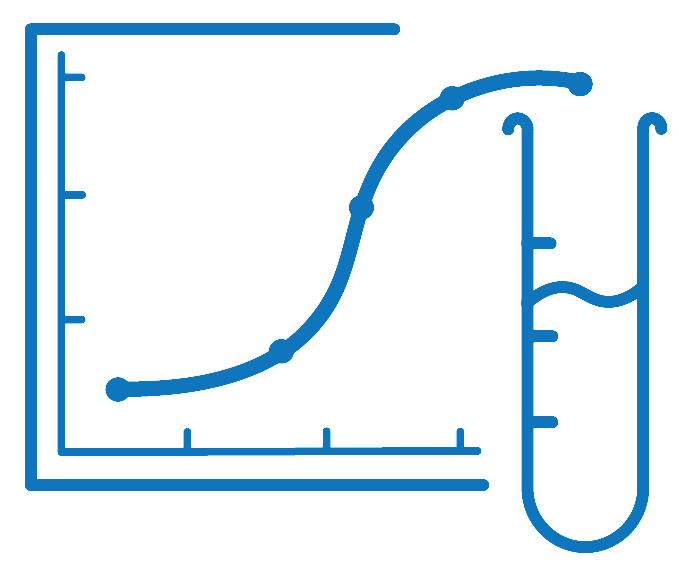
Help accelerate success of your biopharmaceutical development.
GRA has dedicated experts who provide extensive support for Assay Development and Quality Control (QC) to ensure and accelerate the successful development of biopharmaceutical molecules across multiple modalities, platforms, indications and routes of administration. Quality assessed data from statistically designed experiments and models ensure data used for machine learning is robust.

Assay Development is a critical process in the pharmaceutical and biotechnology industries, involving the creation, optimisation and validation of methods to measure the presence, amount, or activity of a substance (e.g., a drug, biomarker), or contaminant (including toxicology studies on raw materials) as per ICH guidelines. This process ensures that assays are reliable, reproducible, and suitable for their intended purpose, but ensuring the appropriate effort (considering cost and time) is applied to the assay dependent on the pre-clinical or clinical phase of the product. More complex assays are developed to support product characterisation and comparability during the product lifecycle; these are not subject to the same ICH regulations.
GRA applies Quality by Design to develop assays, specifically using Design of Experiment (DoE) tools and other statistical approaches to reduce development risk and support client assay development. Regulatory requirements are considered throughout the development with consideration of the CMC module requirements in the dossiers (eg. IMPD, IND). Protocols with pre-determined acceptance criteria and reports will be generated by GRA or through the testing company, as required, for each step of the method development.
A typical assay development Quality by Design programme for a new active biopharmaceutical may include:
- Quality Target Product Profile (QTPP): utilising the relevant information from the Target Product Profile to identify which assays are required to analyse the active.
- Analytical Target Profile (ATP) or Analytical Plan: defining the requirements of the assay(s) for use in the specification (pre-determined requirements), eg. identity, content, qualitative, quantitative, stability indicating?
- Qualification: early clinical phase appropriate validation to demonstrate an assay is fit for its intended purpose and performs consistently under specified conditions, including stability indicating assays.
- Development (optimisation): refining assay conditions to achieve optimal performance and reliability, often incorporates statistical tools to assess interactions between factors. Typically performed between completion of phase I and start of phase III clinical trials.
- Validation: late clinical phase appropriate validation that follows ICH guidance Q2 confirming that assays meet regulatory requirements and are suitable for their intended use. Typically performed by QC teams in preparation for phase III or during, but prior to production of process consistency batches (or PPQs).
Quality Control (QC) ensures that the developed assays consistently produce accurate and precise results during routine use in facilities working to current Good Manufacturing Practice (cGMP) guidelines. QC is critical for maintaining the integrity and quality of the biopharmaceutical throughout its lifecycle.
GRA’s proven experts provide support for design, strategies and management of:
- Technology Transfers: into QC laboratories from development or other QC laboratories.
- Method Validations: following ICH guidance Q2, confirming that assays meet regulatory requirements and are suitable for their intended use.
- Sample Management: implementing workflows for sample handling, storage, and analysis to ensure data integrity.
- Environmental Monitoring: establishing protocols to monitor and control the quality of the laboratory environment.
- Raw materials testing: reviewing incoming goods testing strategy and performance.
- Stability Programs: designing stability studies to monitor the drug's shelf life and providing confirmation of the time that it remains effective (thus predicting the expiry date).
- Analytical Test Methods: developing and validating test methods to ensure they produce accurate and precise results.